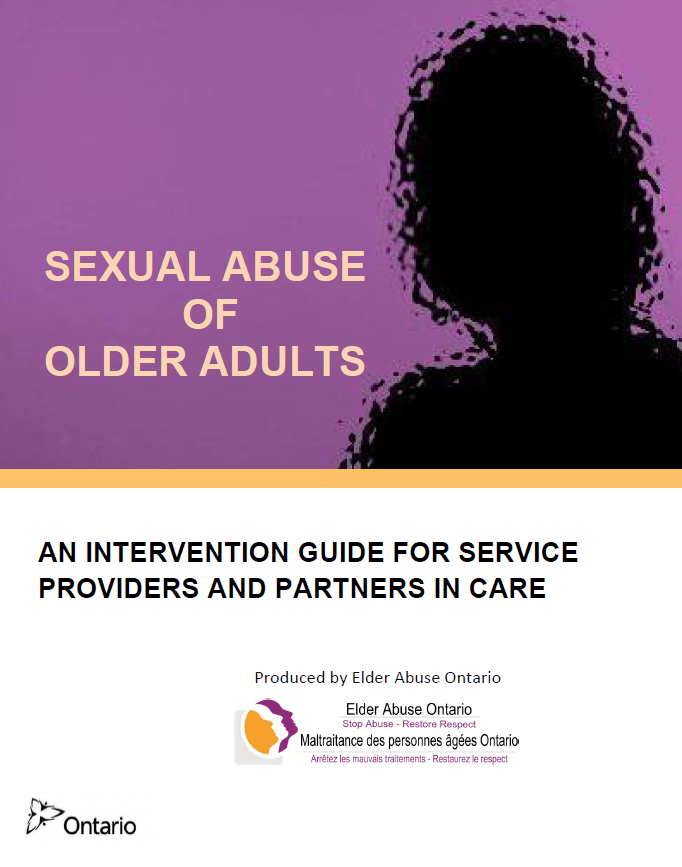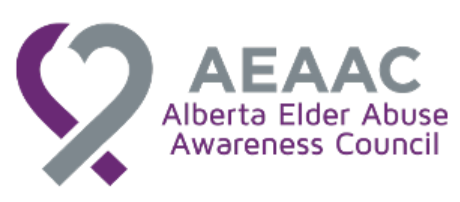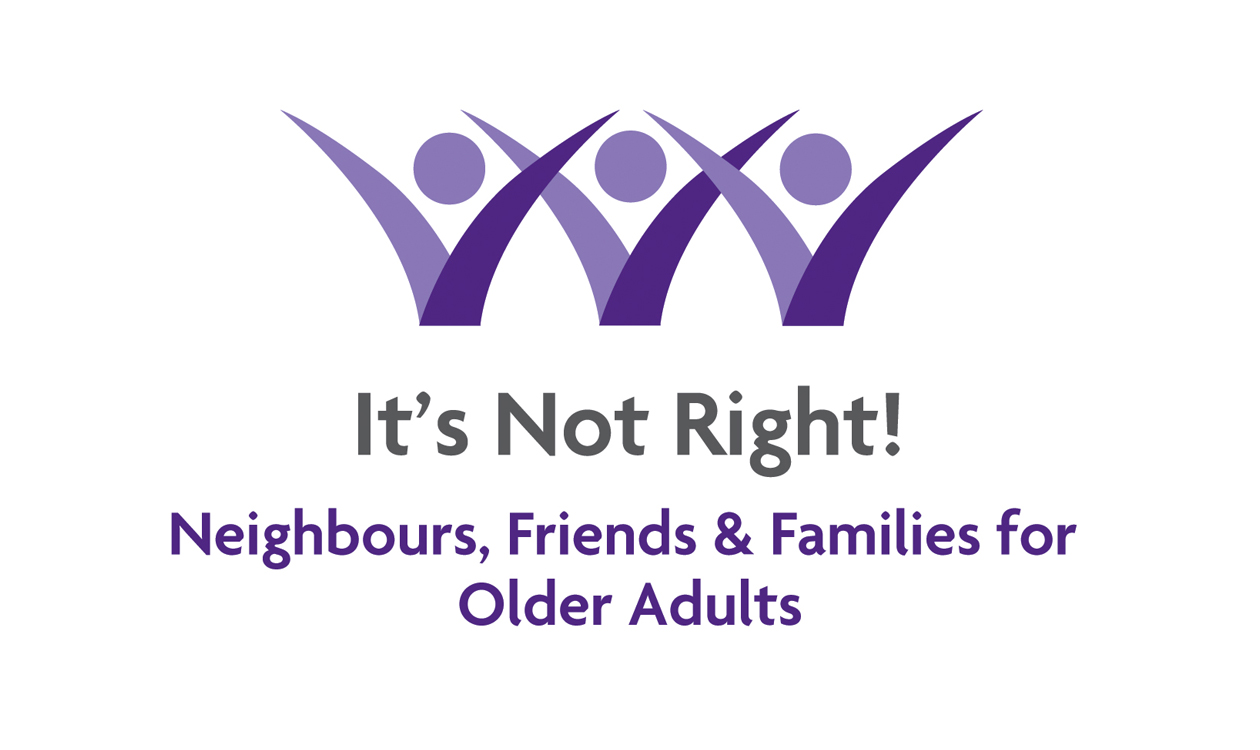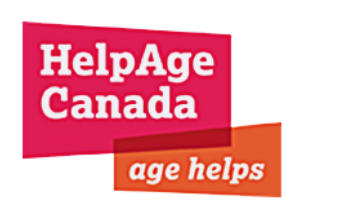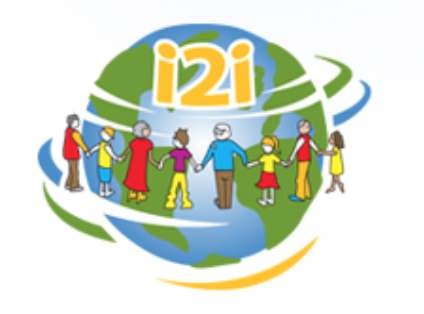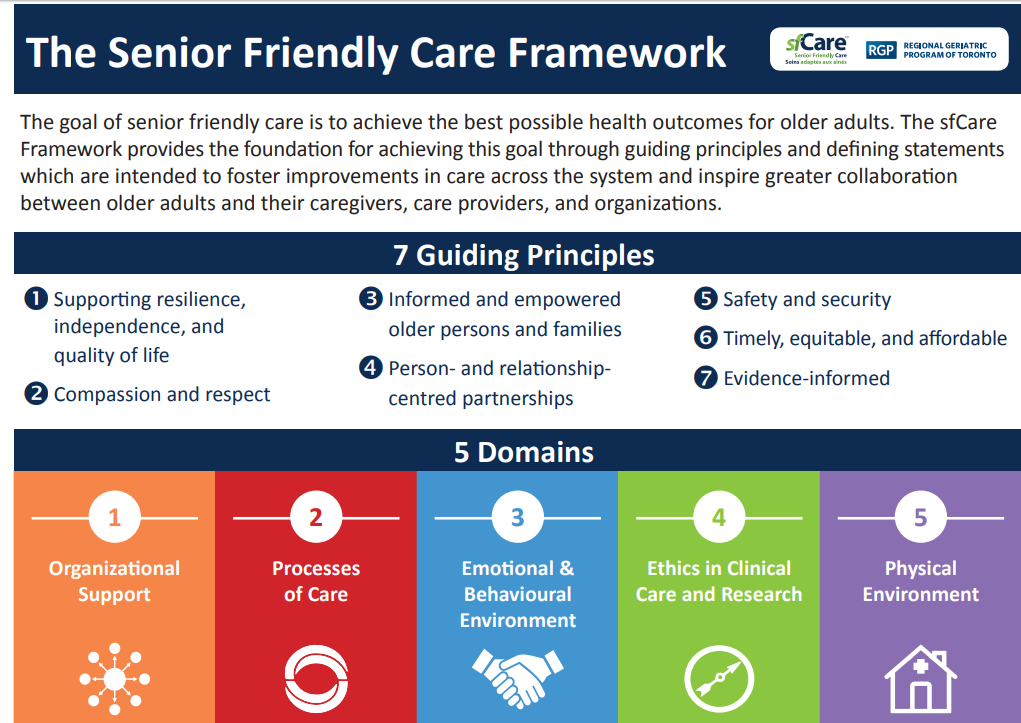
See the accompanying toolkit here
Source: Regional Geriatric Program of Toronto
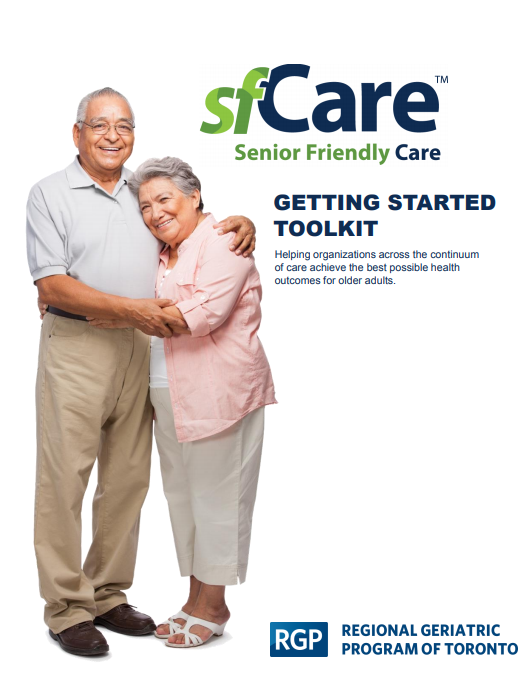
It helps your healthcare organization assess where they are on their sfCare journey, and provides practical resources for implementing real change. This toolkit helps answer questions like:
- How do we implement the sfCare Framework?
- How do we know how senior-friendly our organization is, and what can we do to improve?
- How do we compare to other organizations like ours?
- What is a "senior-friendly lens"?
The sfCare Framework provides a foundation for achieving the best possible outcomes for older adults. The Framework’s guiding principles and defining statements collectively describe what senior friendly care looks like, but it is not a “how to guide”.
The Toolkit helps bring this foundational vision to life by providing actionable recommendations and resources. The Senior Friendly Care Getting Started Toolkit includes:
- Self-Assessment Tool
- Implementation Resources
- Intro to sfCare training
The sfCare Getting Started Toolkit will be updated regularly with new tools and resources. The most recent version of this toolkit is available at https://www.rgptoronto.ca/resources/sfcare-tools/
The following is part of our project “Increasing Access to Justice for Older Adult Victims of Sexual Assault: A Capacity Building Approach”, funded by the Justice Canada Victims Fund.Learn more about this project or consult the full list of resources
''This module is adaptable for:
- Seniors and volunteers in the community
- Health-care professionals working in hospitals, community-based agencies,or individuals’ homes
- Retirement Homes
- Long-Term care staff
- Front-line responders
It includes the following:
- Guiding Principles
- Overview and Definition(s)
- Risk factors and Warning Signs
- Assessment Questions
- Interview Strategy
- Safety Planning
- Reporting and Legislation
- Case Studies – Discussion Questions, Fact Boxes, Decision-Trees to assist with navigating supports and interventions
- Provincial Resources/Services
Source: Elder Abuse Ontario
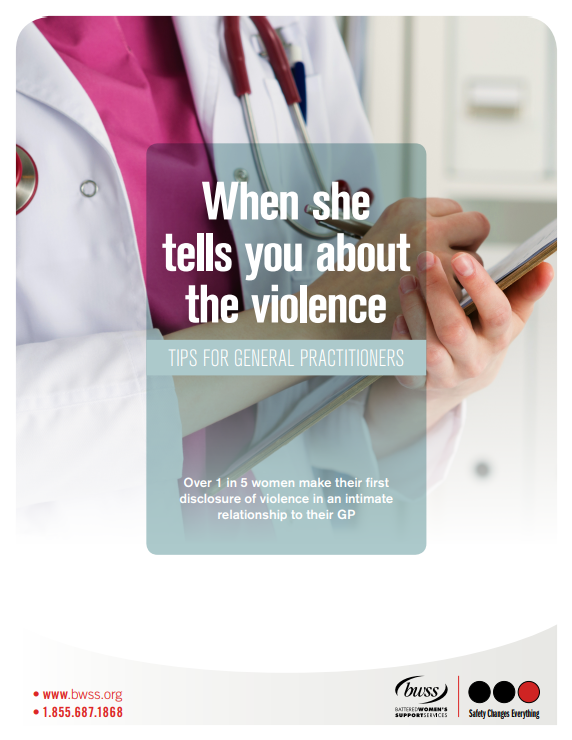
The campaign includes an information and resource kit for general practitioners throughout B.C.. It’s designed to help practitioners better identify and respond to women who may be experiencing violence in an intimate relationship; and offer resources that are available to support women, including immediate safe places to go, crisis support, and ongoing counselling.
The medical community plays a key role in early detection, intervention, provision of specialized treatment and effective referral of survivors of violence in intimate relationships helping alleviate the physical, sexual and emotional consequences."
Source: Battered Women Support Services
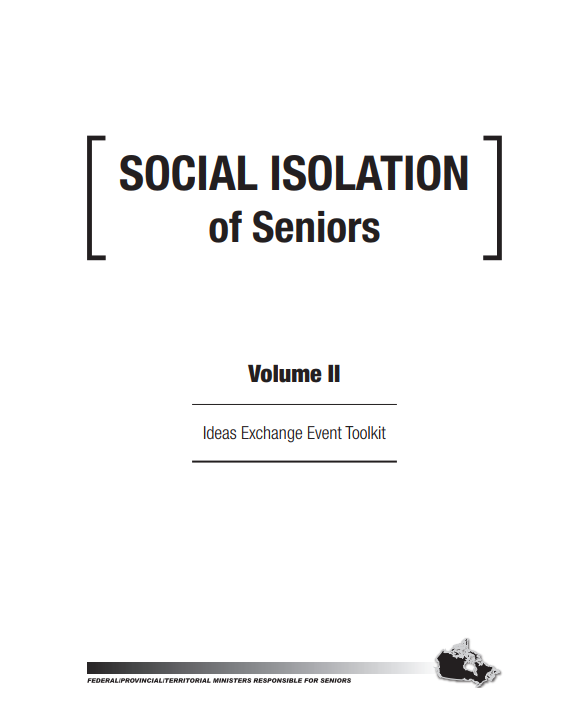
Ideas exchange events:
- help people and groups to share knowledge about the social isolation of seniors
- build and strengthen relationships in communities
- create opportunities for working together to address the social isolation of seniors in the community
For an overview of social isolation of seniors in Canada, consult Social Isolation of Seniors - Volume I: Understanding the issue and finding solutions
Page 20 of 31


